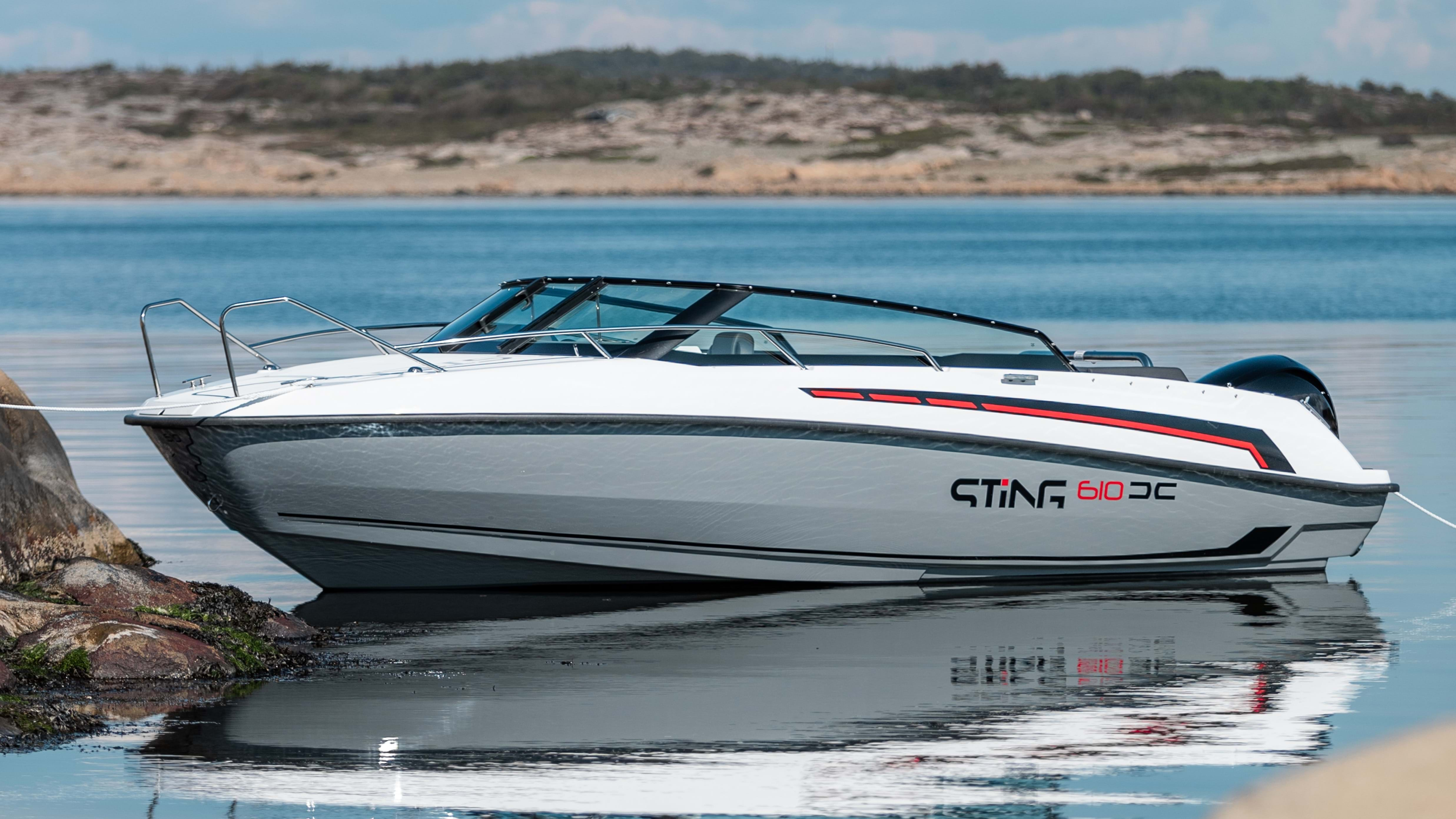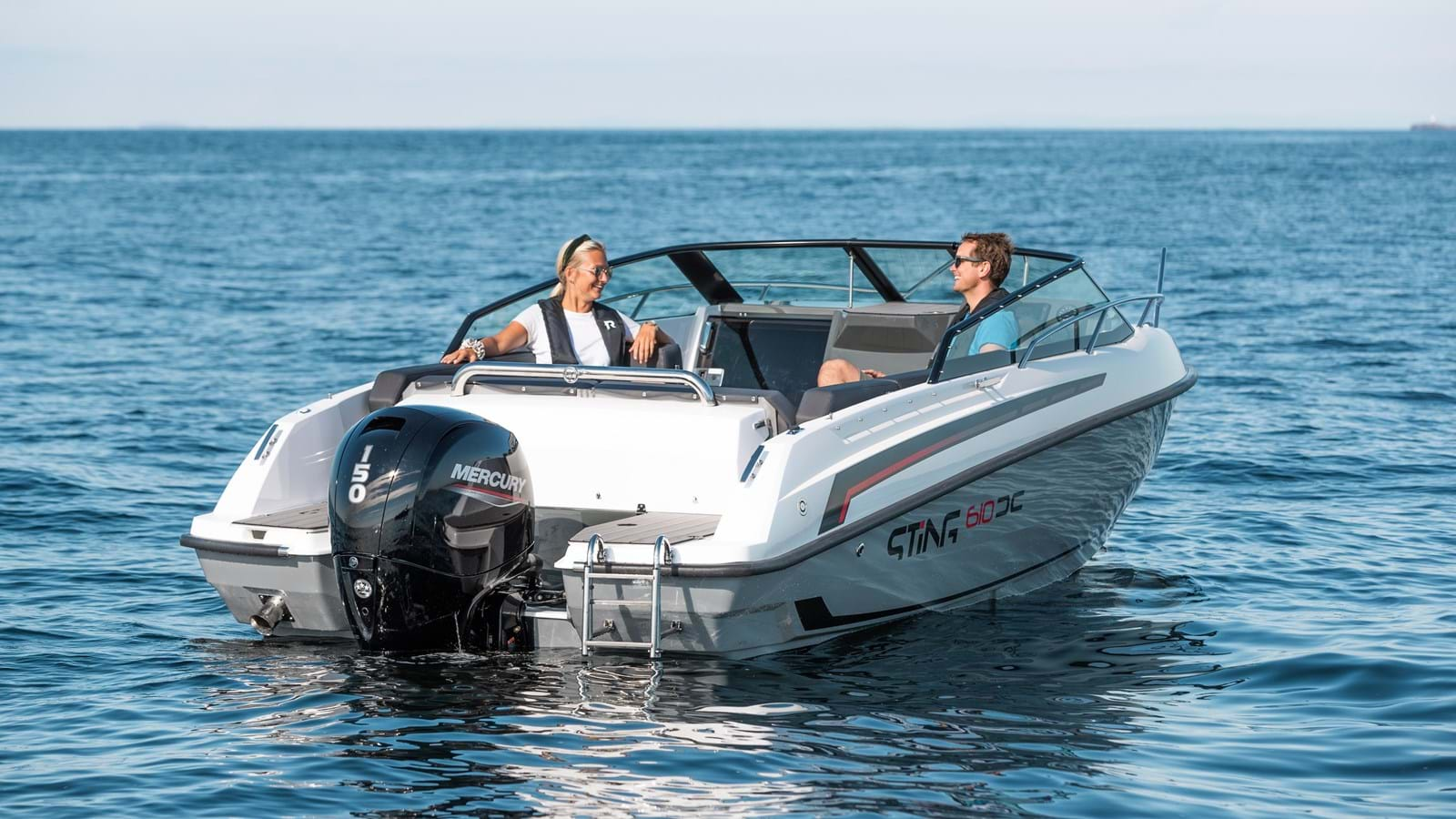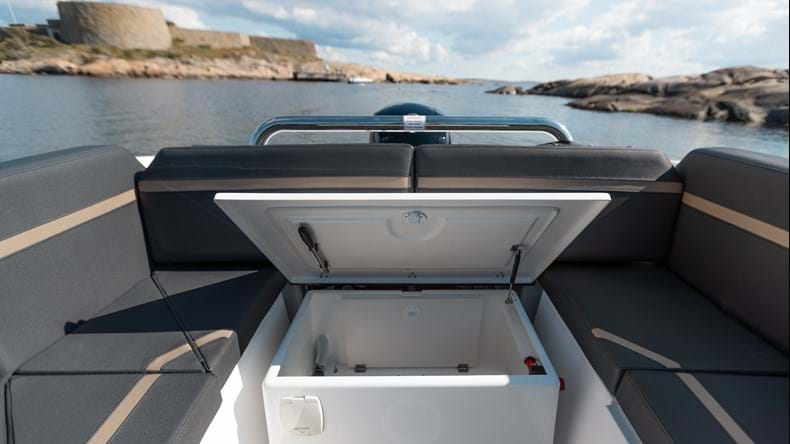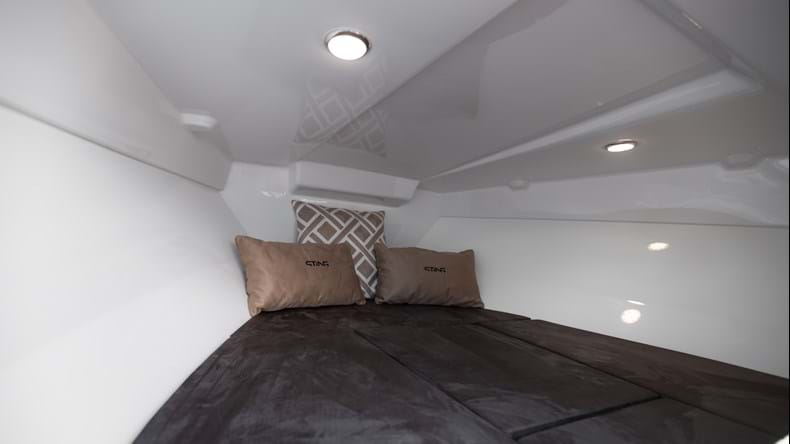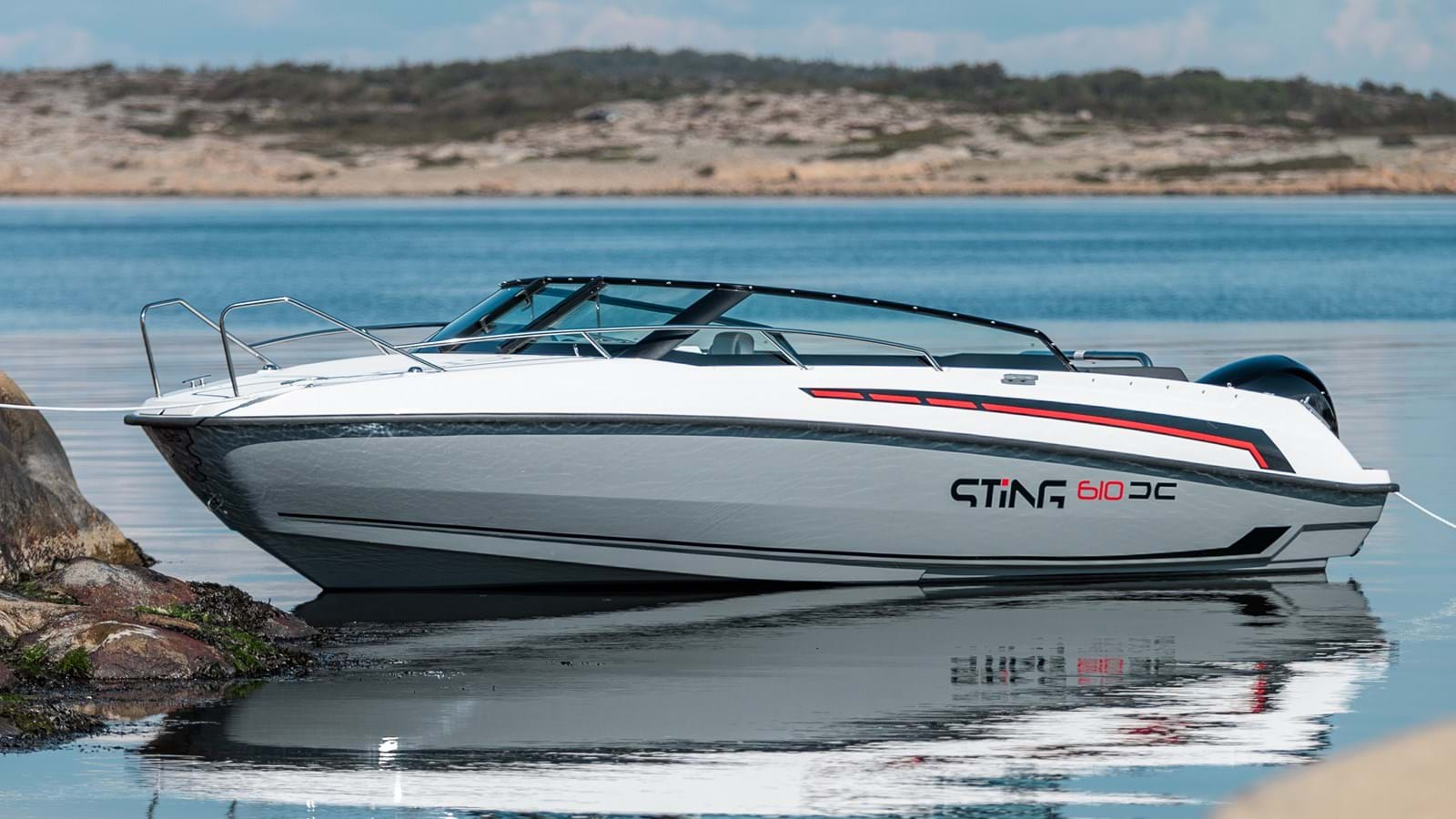Daycruiser buyers guide: what you need to know before purchasing the daycruiser
WHAT NEEDS ARE OFTEN INCLUDED WHEN CONSIDERING A DAYCRUISER?
Whether you have small childre, adolescents or are only looking for a boat for 2 adults, the daycruiser is a perfect option for when you want a boat suited for weekend trips or longer holidays. The daycruiser design is typically focused on creating a warm and enjoyable sensation of the cockpit, while at the same time providing a spacious cabin and practical solutions. There are certain needs that the daycruiser often meets, like the need for high freeboard and safety (which is especially true if you are traveling with younger children). The larger daycruisers makes it easier to use the boat for overnight trips or weekend trips, but many are also using the daycruiser for spending warm summer days on the seas. The cabin area in these types of boats is a popular area for children, where they can retreat when the summer air gets cooler (for example in the evening). In this buyers guide, we are providing information on what to look for when considering buying a daycruiser.
DAY TRIPS VS. LONGER TRIPS: HOW CAN I USE THE DAYCRUISER
Many of the daycruisers are used for daytrips and often in sheltered waters inside islands and in archipelagos. For this type of use, a daycruiser from sizes of around 6 meters (20 feet) often work well. If you are looking for solutions to leave for longer journeys such as weekend trips where the distances you cover are larger and you are spending more time outside the safety of the archipelago, a larger daycruiser (above 7 meters/23 feet) can often be a suitable choice. The main reason for this is the fact that you get more space, improved storage spacing, larger cockpit (in most cases) and most importantly better sea performance when the seas get rougher (longer trips often require you to walk in unprotected waters at times). One of our favorite tips is to test the cockpit and the cabin, as the different daycruisers will have different approach to design and layout. The various approaches will become visible when you are evaluating the space og the cabin. The reason for this is largely based on the location of the windscreen and the utilization of the hull width.
EVALUATING YOUR NEEDS: HOW MANY ARE YOU AND HOW WILL THE BOAT BE USED?
A some sort of analysis on what you need from a daycruiser is a good place to start when you want to understand which daycruiser model would fit you best. Basic questions you should ask yourself are:
- How many are you typically in the boat?
- Where are you going for your trips?
- Who do you usually bring with you in the boat?
The reason for asking these questions are that the daycruisers are designed with a certain buoyancy, weight load and approved number of people you can have in the boat at all times. The intended use you have are giving a set of requirements for the boat you are looking for.
A smart place to start when looking for a boat is to look through the specifications for how many people are allowed in the boat at any given time and what the approved maximum load is. Some daycruisers have slightly higher buoyancy and a stern/aft deck that is designed to copen with the weight (the sofa of the aft cockpit is a popular and natural place to be when going for a ride in this type of boat). Information about weight and limitations can be found on the CE specification plate in the boat (the small metal plate you find in the cockpit or in the stern). Spend some time understanding this, and the risk of unpleasant suprises will be kept to a minimum.
In daycruisers with larger swimming platforms, these platforms tend to be a popular place to be on warm summer days. This area is also the outlet of the self draining system of the boat (if it has one) and then placing a lot of weight here, you need to pay attention. In many daycruisers, you have the option of closing these at increased load and weight on the aft deck (but remember to open them when you are back at the pier, to make sure the self draining system does its job).
HULL DESIGN, FUNCTION AND DESIGN OF THE DAY ON THE DAYCRUISER
The design of the daycruiser and function of the hull depend on the focus of the manufacturer on driving characteristics and practical solutions/utilization of the hull space. Some daycruisers are wide with a high focus on spacioucness, but often with the aim of going at more relaxed speeds. Regardless of this, it can be quite useful to study the boat's specifications such as width, freeboard and consumption pattern. These are definitely elements you will make notice of when you start using your boat.
You will definitely also start noticing the practical solutions of the boat. Thats why this is also an important aspect to study before you decide to buy a certain model. Important points you should think through can be:
- How are the storage spaces operated? How you open and load the storage spaces can be quite different, some more and some less practical. Make sure you take notice of this and check if it suits your needs
- How are the cushions mounted and are they practical to remove/split during use?
- Aft cockput sofa - how is the design and how does it fit your needs?
- Many people love the U-shaped sofa, where there is plenty of room for many people
- Check out the cockpit table table - how large is this, is it suitable for dining and is the size right for you and your needs?
- Many daycruisers have an extra cushion for a sun bed on the aft deck (together with the sofa) and on several models the table also serves as a base for the sun bed. Test this and see how this is solved practically appeals to you.
- Wind protection: test the driver and passenger seats, and try to find out if the wind protection is good enough for you (based on your height for instance)
- Swimming platforms: is the boat equipped with solid swimming platforms? This often becomes favorite place of the children, and it can be a good idea to check how the size and design of these platforms are. This is especially true when looking for a daycruiser in the size 6-7 meters( up to 22 feet), where the designer is challenged with trying to make room using less space.
A good piece of advice: if you have the opportunity to test drive, use the opportunity well and get to know the boat!
Picture: example of swimming platforms on a daycruiser
WHAT KIND OF EQUIPMENT SHOULD YOU LOOK FOR IN A DAYCRUISER?
Canopy. The canopy of a daycruiser is often used in relation to accommodation and often longer trips during the summertime. With the canopy mounted, you create a wonderful and cosy atmosphere inside the boat during darker hours. Many people also use the daycruiser as daytrip boatd in nice weather, but the canopy solution is in either way often a welcoming type of equipment, especially during the beginning of and at the end of the boating season.
During your search for the perfect daycruiser, check for the canopy options and how the canopy storage area works. Another good tip is to check the height under the canopy, especially if you plan to use the boat for longer trips and know that you will have the canopy mounted in the evening / night.
Lights. Many modern daycruisers have good lighting and illumination on deck and in the cockpit. With the introduction of LED the power consumption decreased and the brightness has increased. You should look into which lightening solutions the manufacturer has used. You should also pay attention to how the lightening inside the cabin is done, sufficient illumination should be provider to facilitate easy loading of luggage as well as usage of the cabin during darker hours. Some of the things you should pay attention to may be:
- How many lights do the daycruiser have and where are they located?
- From where do I operate the cabin lights, cockpit lights and lights on deck?
- Where is the lightening switch(es) for the cabin located (is it easy to turn off the light at night)?
- Verify that the daycruiser you are looking at has LED lighteing
Storage spaces. Whether you are going to use the boat for shorter daytrips or for longer trips, it is important to have enough space for luggage. You will find that the different manufacturors have different ways to solve this. If you are evaluating a daycruiser of more than 7 meters (23 feet), there is often a flooring area in the cabin (you typically "step down" into the cabin), and storage areas can typically be found beneath the beds (some also have small cabinets for easy storage). Check the size of these storage compartments and how the loading works.
Picture: Storage space example of a daycruiser
If you are looking for a daycruiser beneath 7 meters (23 feet), the cabin is often quipped with a flat flooring, covered with pillows / mattresses. Some of these boats do also have storage spaces below the bed, worthwhile checking out.
Also look for any cabinets onboard. Do they have enough space for towels, extra clothes, plates, cutlery and glasses? The choices you make here can often be the difference between a less tidy and very tidy cockpit.
Electricity. Several daycruisers have an option for delivery of two (dual) batteries, i.e. one starter battery and one consumption battery. The advantage of choosing two batteries is that you will always have the starter battery available and not affected by the power consumption on board. This feature is especially useful on longer trips, but it is important to remember that many boats in the summer go short and frequent trips and there is thus limited time to charge the battery during use. Thus, an extra consumer battery can be a good insurance even if you use the boat in this way. Cooling drawer, stereo system with speakers and charging of phones / tablets draws power, and if there are many of you on board who need charging options, it is nice to have the extra battery.
Tip: check with the supplier of the boat you are considering if you can have the boat delivered with two batteries.
Beds. In the same way as with living space, there are differences in how many beds you have on board. If you are looking for a day cruiser under 7 meters, there is often room for 2 people and perhaps the opportunity to mount a sun lounger on the aft deck to sleep there (under the canopy in the cockpit). Thus, a day cruiser of 6-7 meters can accommodate 3-4 people. If you are going to look at day cruisers from 7-10 meters, you can also look for a cabin, space in a double bed in the bow and what solution you have on the aft deck for sleeping there. If the boat has a U-sofa or a large L-sofa in the cockpit, it is more often easier to mount a larger sun lounger that can be comfortable to sleep on. Some tips here are:
- Always start by assessing your / their need for beds and the use you have of the boat
- Look at the cabin solution and see if it fits your needs
- If possible, visit the dealer and test the mattresses in the different boats. Are there different comforts?
Picture: Example of cabin in a 6-6,5 meter daycruiser
Navigation. Newer navigation tools have made it safer to travel at sea. The screens have become larger and easier to read, even with the sun shining straight on the display. The different day cruisers come with different plotters, but a good tip is to get to know the plotter you have. You can often find good instructional videos on YouTube, or on the boat manufacturer's website. In 6-7 meter long day cruisers, the dashboard is often made for one plotter, while several over 7 meters can be delivered with 2 plotters. This allows you to get more overview at the same time. Think about what kind of use you have of the boat, and see if you need more plotters. Tip: Remember that chart plotters are only an aid at sea, you should have a good overview of the sea marks and keep a close eye on what is going on around it when you drive.
Mer om denne kildetekstenKildeteksten er nødvendig for å få mer informasjon om oversettelsen
Send tilbakemelding
Sidepaneler

